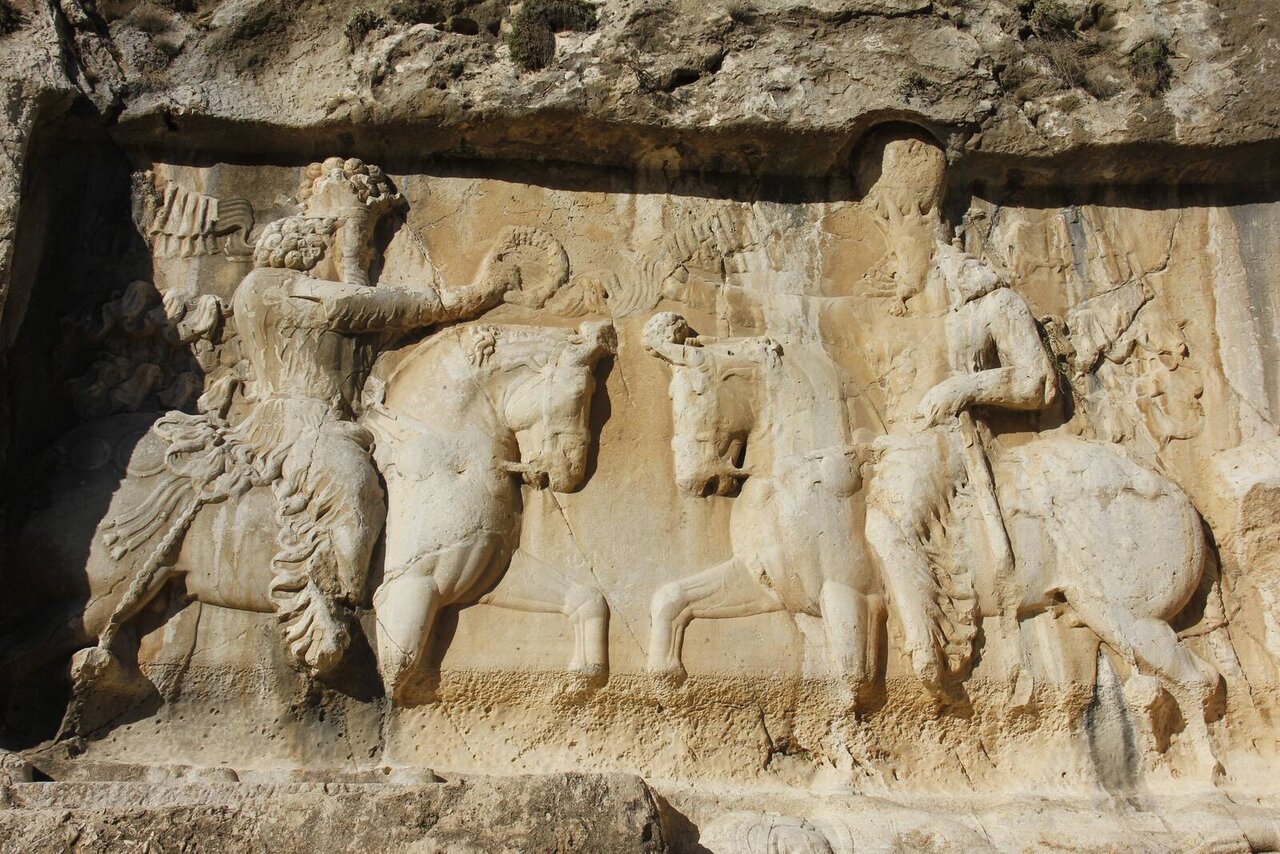UNESCO-listed Sassanian landscape to undergo tourist developments

TEHRAN – The UNESCO-registered Sassanid Archaeological Landscape of the Fars Region is set to undergo some tourism-friendly projects.
The property is composed of eight selected archaeological site components in three geographical areas Firuzabad, Bishapur, and Sarvestan, all located in the Fars province of southern Iran. More precisely, it includes fortification structures, palaces, reliefs, and city remains dating back to the earliest and latest moments of the Sassanid Empire, which ruled the Persian Empire from 224 to 651 CE.
On Saturday, Fars province’s tourism chief, Mohammad Sabet Eqlidi, announced the implementation of 20 prestigious cultural heritage projects aimed at enhancing the Sassanid Archaeological Landscape of the Fars Region.
These projects have been formulated to significantly improve the aesthetics and accessibility of the sites significantly, leveraging both national and provincial funds, ISNA reported.
The project will touch upon access routes, artificial lighting, tourist amenities, the official said, adding: “It includes the restoration and reinforcement of various historical monuments as well.”
“These initiatives are scheduled for execution within this year (which ends on March 20, 2025).”
“Among the highlighted projects is the installation of protective coverings over the brick domes of the Sarvestan Sassanid Palace. Additionally, there will be efforts to establish safe visitor routes and access to the architectural spaces and surrounding areas of the palace.”
These comprehensive projects are set to revitalize and enhance the visitor experience of the Sassanid Archaeological Landscape of the Fars Region, ensuring the preservation and accessibility of these historical treasures, the official explained.
Developments at the Bishapur complex
For the Bishapur complex, the projects include the creation of safe visitor routes and access to the architectural spaces, protective coverings over layers and decorations at risk, and the enhancement and safety improvement of the access route to the Shapur cave.
Other plans involve the improvement and organization of the access route to the rock carvings at Tang-e Chogan and the construction and renovation of sanitary facilities within the Bishapur complex.
Initiatives in the ancient city of Gur
In the city of Gur, plans include the creation of tourist service areas and an information station…. and the establishment of safe visitor routes and access to the architectural spaces.
Additionally, the restoration and reinforcement of the architectural structures of Qaleh Dokhtar and the construction of safe visitor routes and access to the Ardashir Palace and its surroundings are on the agenda.
Enhancements to Ardashir Palace and other Sassanid sites
The enhancement and landscaping of the parking area at Ardashir Palace and the creation of an information station are also planned. Protective coverings over the Sassanid bas-relief in Tangab Valley and the improvement and adaptation of the access route to the Sassanid bas-relief in Tangab Valley will be executed. Furthermore, the installation of new furniture elements for the Sassanid complex, as well as the illumination of selected Sassanid structures such as the Gur city minaret, Ardashir Palace, Bishapur’s government citadel, and the rock carvings at Tang-e Chogan, will be carried out.
The Sassanid epoch is of very high importance in the history of Iran. Under the Sassanids, Persian art and architecture experienced a general renaissance. Architecture often took grandiose proportions, such as some palaces located in Ctesiphon, Firuzabad, and Sarvestan, which are amongst the highlights of the ensemble.
Crafts such as metalwork and gem engraving grew highly sophisticated, yet scholarship was encouraged by the state. In those years, works from both the East and West were translated into Pahlavi, the language of the Sassanians.
The Sassanid archaeological landscape also represents a highly efficient system of land use and strategic utilization of natural topography in the creation of the earliest cultural centers of the Sassanid civilization.
In 2018, UNESCO added an ensemble of Sassanian historical cities in southern Iran — titled “Sassanid Archaeological Landscape of Fars Region”-- to its World Heritage list. The ensemble comprises eight archaeological sites situated in three geographical parts of Firuzabad, Bishapur, and Sarvestan. It reflects the optimized utilization of natural topography and bears witness to the influence of Achaemenid and Parthian cultural traditions and Roman art that later made a significant impact on the architecture and artistic styles of the Islamic era.
AM
Leave a Comment